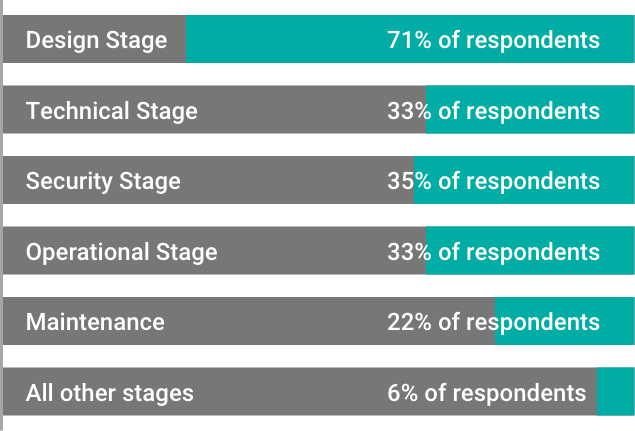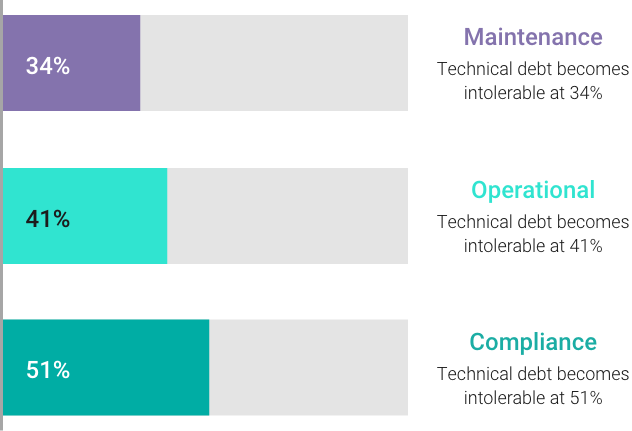Embedded Linux
Technical Debt Calculator
Calculate the expected and unexpected cost of technical debt to your embedded Linux programs, and understand which aspects of your program technical debt impacts most.
Technical debt — the cost of maintaining source code caused by deviation from a main project branch — is a commonly understood concept. Even so, according to a recent survey of embedded Linux practitioners, teams typically underestimate the cost of technical debt to their organizations by more than 60%. This expense is compounded across the number of projects your team develops and supports each year.
Find out the estimated cost of your organization's technical debt.
We spoke with hundreds of embedded Linux practitioners across a range of industries, on developments teams large and small, and with a wide range of budgets. On average, members of this group completed about seven projects of various sizes each year, including new platform work, significant updates, and minor updates.
While the specifics of your company's embedded Linux development practice may differ, you can select from the options below to arrive at an estimate of technical debt in your industry by team size or budget.
Calculated Annual Cost of Technical Debt
This number is based on the average number of Linux projects per year.
Embedded Linux practitioners understand that they will create some technical debt as they develop their platforms and applications. Unfortunately, the amount of planned technical debt tends to be less than half of the debt they are creating.
Across all industries, budget ranges, and team sizes, the amount of technical debt that teams did not plan for was significantly higher than the amount they did plan for.
Your technical debt was calculated using average annual development costs.
To get a customized analysis based on your own development program, get in touch with a Wind River expert.
Talk to an ExpertSurvey Result Highlights
Which stages of a project are most critical when it comes to addressing technical debt?
Embedded Linux practitioners agree that the design stage is most critical when it comes to technical debt. If anything, the importance of this stage is understated, as many organizations underestimate both the cost and volume of their technical debt.

Stages of development with lowest tolerance for technical debt
In which stages of development was there the lowest tolerance for technical debt?
The impact of technical debt is felt most acutely in the maintenance, operational, and compliance stages of the lifecycle — after a project team may already have disbanded, devices are already in the field, or a compliance matter demands attention regardless of such factors.

Most critical stages for addressing technical debt, according to survey respondents